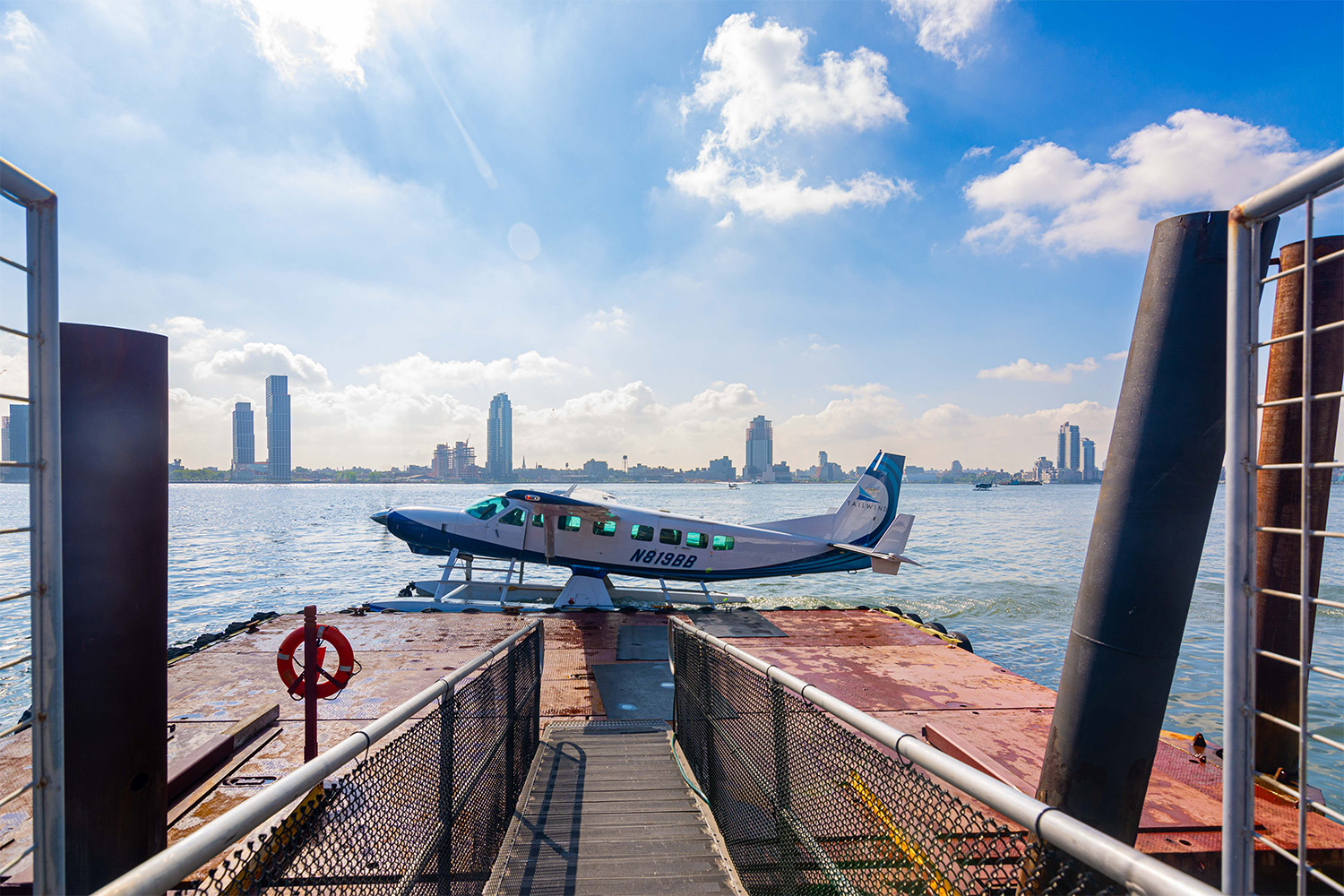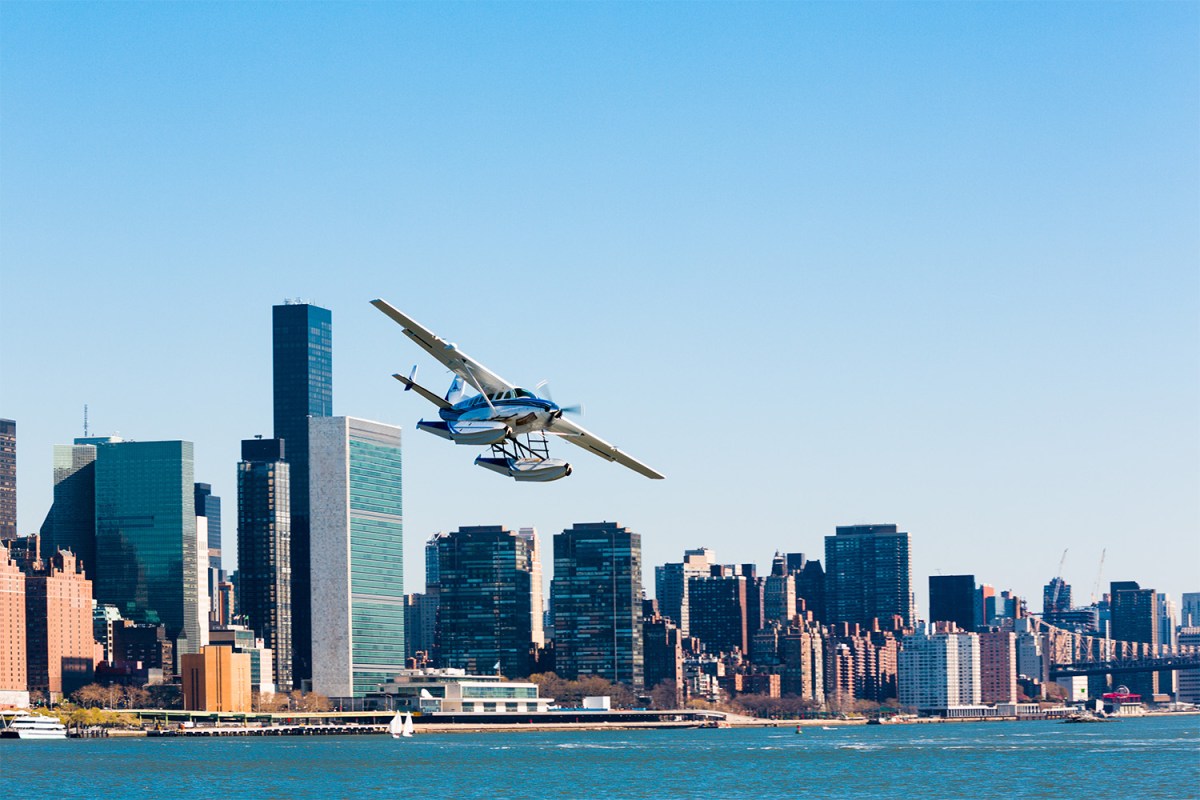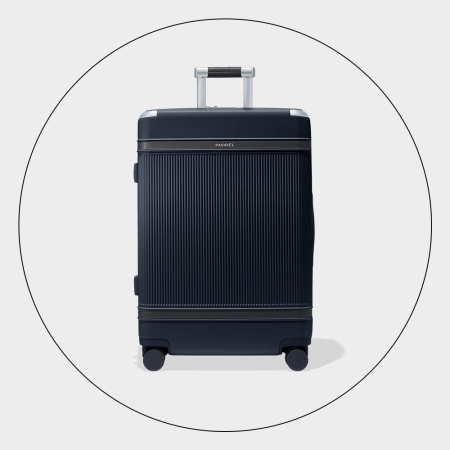In August, I flew from Boston to New York on a seaplane. This wasn’t some scenic, tourist flight (though the view was incredible). Rather this was a tight, 75-minute commercial flight that landed in the East River and 23rd Street and had me in Midtown before lunch. The PR rep for Tailwind Air, the upstart carrier, described the company’s service as “the new Concorde.” And while it’s definitely not that, it was much faster than the shuttle. Or (apologies to President Biden) Amtrak. Plus, I never had to take my shoes off.
Call it the rise of private-ish travel. While actually flying private is out of reach for most people — it’s also terrible for the planet and increasingly a public relations headache for celebrities — there are options for how to avoid the airport, or at least the big ones. And it might cost less than you think. Here’s how to do it.
Take to the Seas
Tailwind Air — that seaplane service I can’t stop thinking about — launched as a charter but recently expanded to include seasonal, commercial flights between Manhattan and Boston Harbor. Tailwind flies to tony getaways like the Hamptons and Provincetown, Mass. And on September 13th they’ll introduce regular service from the Manhattan waterfront to Washington, D.C.’s College Park Airport — a quiet landing strip just 25 minutes from the Capitol. (Despite the name, these seaplanes are equally comfortable landing on the tarmac as they are on water.)
Flights start at $395 each way (if you snag them early); last-minute refundable fares run $795. While it’s not cheap, there’s always a certain customer that values convenience over money. Said Tailwind Air co-founder and executive vice president Peter Manice: “The product is memorable, un-stressful. But the biggest thing is speed. There’s nothing between you and the plane.”
And he was right. I showed up to Tailwind’s Boston Harbor dock 10 minutes before take-off. There was no security line and — better yet — no baggage claim on the other end. There were just eight passengers on board (plus a small dog traveling in a shoulder bag). And while I have a fear of heights and a genuine aversion to danger — shout out to my fellow Jews! — the whole thing felt like flying in the backseat of a Chevy. We even had regular cell phone service for some of the flight. As a neighbor said to me, casually scrolling through Twitter: “It feels like we’re barely moving.”
Pro tip: Tailwind offers discounted, prepaid books of 10, 20, and 50 tickets for regular commuters. There’s also a membership club that — for $2,995 a year — gives fliers access to seats for as little as $35 one-way. To celebrate the new D.C. route, Tailwind is also offering a free companion ticket (through December 21st).
Look at Alternative Airlines
It’s been a hellish summer of travel with flight cancellations and rampant delays, not to mention eternal waits at baggage claim. JSX (formerly known as JetSuiteX) offers an alternative: nearly private travel for as little as $249 one-way.
Since 2016, JSX has been flying a fleet of 30-seat jets (all with business class leg room) to cities like Burbank, Phoenix, and Miami — mostly out of small airports or private terminals for not much more than a big-box airline ticket. Travelers show up 20 minutes before take-off and drinks are included. You can even bring your dog. (Small dogs and cats fly free as long as they fit under the seat; most dogs up to 65 pounds can also fly in-cabin provided you’re willing to pay for an extra seat.)

JSX allows travelers to check two bags for free (even skis and snowboards). But where you’ll really notice the difference is after landing. You’ll retrieve your bags in minutes. And in most locations, you can have your rental car meet you on the tarmac. You might even spy Jeremy Renner in the seat next to you (as a friend of mine did recently).
JSX currently services 33 routes across 18 markets and the carrier is growing fast. In August, they’ll introduce year-round, direct flights from Burbank to Denver (starting at $249 one-way). In late September, nonstop flights between Dallas and Orange County will begin (for as little as $499 one-way), plus daily service between Dallas and Vegas ($549). And while the carrier doesn’t have their own frequent flier program, they’re a codeshare partner with JetBlue and United’s MileagePlus.
Upgrade the Lounge
Sometimes you can’t avoid a major airline. But if you’re in Los Angeles — and you have $995 left in your cratering stock portfolio — you can skip the terminal.
PS LAX bills itself as the “backdoor to your commercial aircraft.” And while that sounds like a dirty joke — or worse, a security concern — it’s neither of those things. PS is a private airport waystation (a mile from LAX) that makes the Delta Lounge look like Chipotle. A friend bought me a “Salon” pass as a gift. And it was just that: a gift. Picture plush couches, stacks of Taschen books and jackfruit tacos. Plus, the place was so quiet you could record a podcast.
The real magic trick, though, was avoiding LAX. PS operates under a special program with TSA and Customs & Border Protection. When you’re ready to board your flight, an escort simply walks you through PS’s own on-site security depot and into an SUV that takes you directly to the plane. I walked up the staircase like Leonardo DiCaprio in Catch Me if You Can. And I never had to set a foot inside the terminal.
Admission to PS currently runs $995 per person for non-members, which is steep, though it does include lunch. (I also borrowed a bunch of travel-sized toiletries from the bathroom because I’m an animal.) There are ways to bring the per-visit price down. If you drop $1,250 on an annual “Salon” membership, the rate falls to $795.
Currently PS is only available in L.A. But a second location will open at Atlanta’s Hartsfield-Jackson airport before the end of 2022. PS is also in “active discussions” with JFK and MIA, according to the company’s co-CEO, Amina Belouizdad, who added: “The goal is to eventually be in every major U.S. airport.”
“Thirty percent of our users are in the entertainment industry — actors, directors, musicians,” she said of their client base. “The other 70 percent are successful businesspeople, CEOs, high-net worth visitors from overseas.” Which makes Atlanta a natural setting for their second lounge, she added. Atlanta is “an intersection of culture, media, entertainment, sports, with many C-suites and executives that live there and already use our service when traveling to L.A. In many ways, we are simply following our Members where they are already traveling.”
This article was featured in the InsideHook newsletter. Sign up now.
























